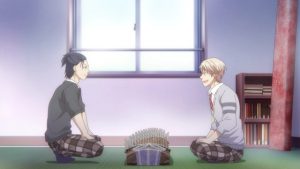 I’d say Kono Oto Tomare wears its heart on its sleeve, but I don’t think even kimonos have sleeves that big. You’d need all those boxes of Kramer’s puffy shirts just to get started (and I don’t wanna be a pirate). It was for series like this that the extremely useful Japanese term “sasuga” may as well have been invented. Thematically speaking you know exactly what you’re going to get, and the foreknowledge does nothing to lessen the impact. I’m sure as hell going to miss it when it ends.
I’d say Kono Oto Tomare wears its heart on its sleeve, but I don’t think even kimonos have sleeves that big. You’d need all those boxes of Kramer’s puffy shirts just to get started (and I don’t wanna be a pirate). It was for series like this that the extremely useful Japanese term “sasuga” may as well have been invented. Thematically speaking you know exactly what you’re going to get, and the foreknowledge does nothing to lessen the impact. I’m sure as hell going to miss it when it ends.
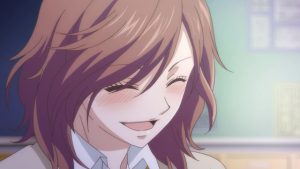 If it sometimes seems as if it’s hard to tell where the music and the cast stand in terms of narrative focus, I think that’s exactly the point. Mangaka Sakura Amyuu comes from a family with deep musical roots, and it shows in her writing. KoT is something of a musing on the nature of creation and performance, and one of the messages it’s clearly sending is that creator and creation and performer and performance can’t be neatly separated. The composition is the composer, and the performance is the performer. That’s always been the view here, but rarely so overtly as it was this week.
If it sometimes seems as if it’s hard to tell where the music and the cast stand in terms of narrative focus, I think that’s exactly the point. Mangaka Sakura Amyuu comes from a family with deep musical roots, and it shows in her writing. KoT is something of a musing on the nature of creation and performance, and one of the messages it’s clearly sending is that creator and creation and performer and performance can’t be neatly separated. The composition is the composer, and the performance is the performer. That’s always been the view here, but rarely so overtly as it was this week.
 The Tokise koto club is broadly comprised of “plain” performers and “flair” performers. Takezou and Sane obviously bear the burden of being the former (one reason why Akira’s presence has had a considerable positive impact on balance – she gets it). In “Tenkyuu” the 17-strings and first kotos have the responsibility of doing the heavy lifting so that the geniuses can have a free hand, and that means those two have to embrace the reality of who they are as performers. That’s not an easy thing, because of course those jobs aren’t the fun ones – and every musical craftsman dreams of being a genius.
The Tokise koto club is broadly comprised of “plain” performers and “flair” performers. Takezou and Sane obviously bear the burden of being the former (one reason why Akira’s presence has had a considerable positive impact on balance – she gets it). In “Tenkyuu” the 17-strings and first kotos have the responsibility of doing the heavy lifting so that the geniuses can have a free hand, and that means those two have to embrace the reality of who they are as performers. That’s not an easy thing, because of course those jobs aren’t the fun ones – and every musical craftsman dreams of being a genius.
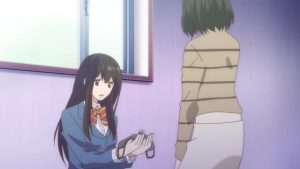 For Takezou, the emotional support comes from Hiro, who at this point sees the good in him at pretty much every turn. This realization seems to have finally lifted the scales from his eyes for the first time as regards her feelings for him, but it’s a baby step if ever there was one. For Sane it’s a little easier – and harder – because he has Chika with him. Chika may be a genius but he’s also a grinder, so much so that his dedication puts Sane to shame and prompts Takezou to put on his captain pants and forbid him from practicing and give his hands a chance to recover.
For Takezou, the emotional support comes from Hiro, who at this point sees the good in him at pretty much every turn. This realization seems to have finally lifted the scales from his eyes for the first time as regards her feelings for him, but it’s a baby step if ever there was one. For Sane it’s a little easier – and harder – because he has Chika with him. Chika may be a genius but he’s also a grinder, so much so that his dedication puts Sane to shame and prompts Takezou to put on his captain pants and forbid him from practicing and give his hands a chance to recover.
 Fortunately for everyone, Takinami-sensei is the one person with the vision and perspective – and experience – to put all this together. Akira is the only one with enough training to realize just how brilliant he is at seeing the big picture and how every piece fits into it (his father is a conductor, after all). Meanwhile Chika falls back on what he’s best at – emotional openness – and finally confronts Satowa about what prompted her to write the piece “Tenkyuu” is based on (and thrash it in front of the world). Of course he needs to know because for Chika, everything comes from a place of pure emotion. He needs to feel the piece to play it, but he also needs to show Satowa that he has her back no matter what.
Fortunately for everyone, Takinami-sensei is the one person with the vision and perspective – and experience – to put all this together. Akira is the only one with enough training to realize just how brilliant he is at seeing the big picture and how every piece fits into it (his father is a conductor, after all). Meanwhile Chika falls back on what he’s best at – emotional openness – and finally confronts Satowa about what prompted her to write the piece “Tenkyuu” is based on (and thrash it in front of the world). Of course he needs to know because for Chika, everything comes from a place of pure emotion. He needs to feel the piece to play it, but he also needs to show Satowa that he has her back no matter what.
 This is where it all starts to come together. Sane embracing his role as the “harmonizer” who links everyone’s sound, Chika finally understanding the soul of the piece, and Satowa being freed up to embrace the emotions that led to its original creation. Unfortunately Doujima-san – no doubt sensing that Akira was slipping out from under her thumb – has chosen this moment to take matters into her own gnarled, spotty hands. She calls in the elders of the Houzuki Society and unloads with all she’s learned about Chika’s past, playing up the threat she poses to the society and Satowa’s supposed revenge angle.
This is where it all starts to come together. Sane embracing his role as the “harmonizer” who links everyone’s sound, Chika finally understanding the soul of the piece, and Satowa being freed up to embrace the emotions that led to its original creation. Unfortunately Doujima-san – no doubt sensing that Akira was slipping out from under her thumb – has chosen this moment to take matters into her own gnarled, spotty hands. She calls in the elders of the Houzuki Society and unloads with all she’s learned about Chika’s past, playing up the threat she poses to the society and Satowa’s supposed revenge angle.
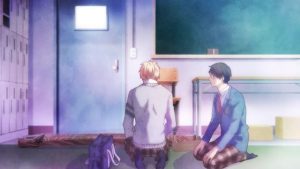 We’re certainly in sasuga territory here. Akira was always going to stand up to her grandmother (quite literally, in this case) at some point, but that moment is no less satisfying for being expected. Indeed, it’s even more satisfying because Satowa’s mother shows she has a breaking point where her daughter is concerned – and Doujima-san has finally pushed past it. Chiharu-san’s last comment – that she’s forfeited the right to watch her daughter perform – reflects that she’s realizing her own culpability in the split between them. That’s a long way from reconciliation but as with dense teenage boys and romance, a journey always beings with a single step – even a baby one.
We’re certainly in sasuga territory here. Akira was always going to stand up to her grandmother (quite literally, in this case) at some point, but that moment is no less satisfying for being expected. Indeed, it’s even more satisfying because Satowa’s mother shows she has a breaking point where her daughter is concerned – and Doujima-san has finally pushed past it. Chiharu-san’s last comment – that she’s forfeited the right to watch her daughter perform – reflects that she’s realizing her own culpability in the split between them. That’s a long way from reconciliation but as with dense teenage boys and romance, a journey always beings with a single step – even a baby one.


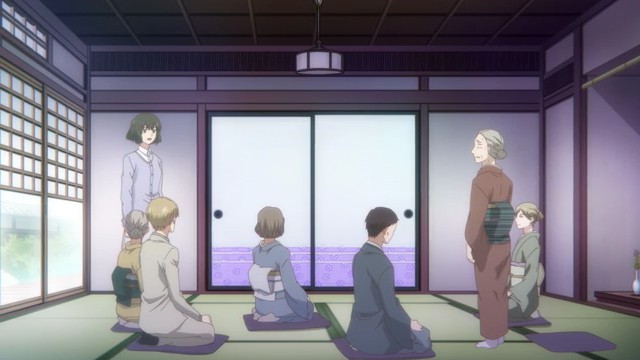
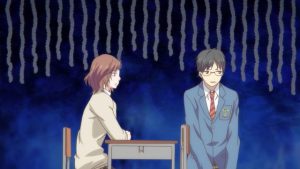


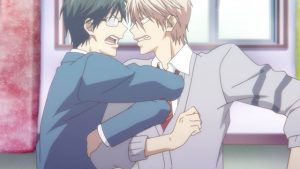



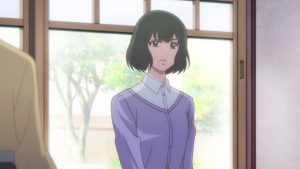
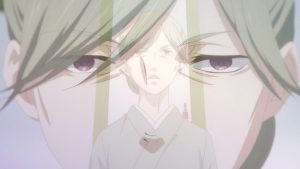



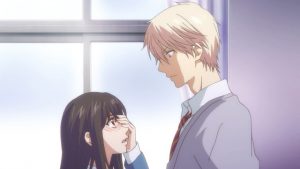


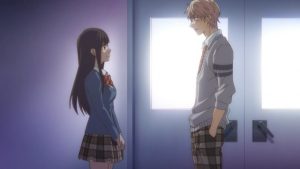

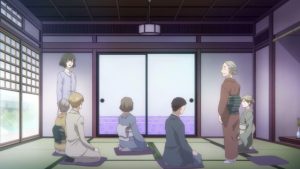
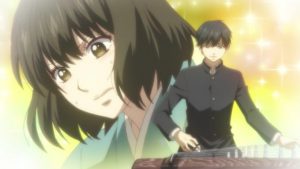
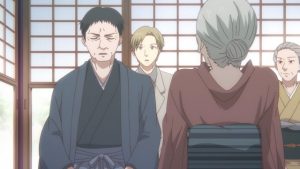
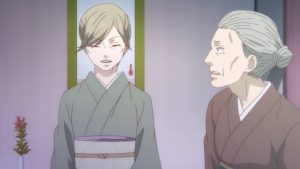
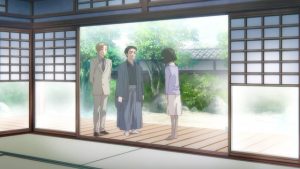
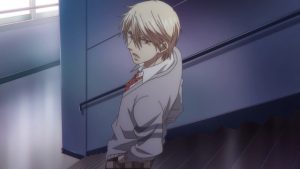


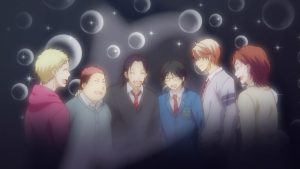



yualexius
November 30, 2019 at 8:15 pmI am so happy that Akira finally able to stand up against her grandmother. I really think this episode is a big win and I couldn’t hide how happy and satisfied I am with it. And yes, I just can’t wait for the Nationals and all the astounding koto performances from different schools.
Proto
January 23, 2020 at 3:30 pmCurrently binging this series. This series is easy to heap praise upon praise, so might as well list the few gripes I have
– Michitaka Sakai who?
– These days Takezo is less of a character and more of the guy we only ever see through Hiro’s rose tinted eyes. At the very least we havent heard his inner thoughs in like forever. Good thing this episode the series took some time to slow down on him.